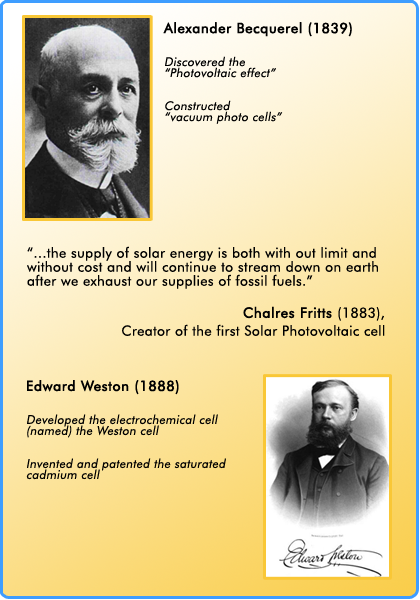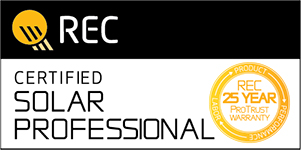History of Solar
1940's
- Bell Labs produces solar PV for the U.S. Government.
- Western Electric later licenses solar cells and solar for $1,800 per watt.
1950's
- Efficiencies increase from 2% to 13%.
1960's
- Costs drop from $1,000 per watt to under a $100 per watt
1970's
- OPEC Oil Crisis
- Carter Administration focuses on domestic energy production
- Puts PV on White House
- Creates National Renewable Energy Laboratory.
1980's
- Average world oil prices fall by 50%
- Reagan takes PV off the White House.
1990's
- Increased demand for PV in Japan, Germany, Israel - leads to Kyoto Protocol.
- U.S. States become proactive: utility deregulation and Clean Energy Fund.
2000's
- Germany, Spain, Japan, U.S. become top producers of solar electric renewable energy.
- Government mandates will force utilities and companies to comply with 20% renewable energy production by 2012.
- Federal and state incentives become more readily available.
2010's
- There are now over 22,700 MW of cumulative solar electric capacity operating in the U.S., enough to power more than 4.6 million average American homes.
- The 3,727 PV systems at U.S. schools have a combined electric capacity of 490 MW, and generate roughly 642,000 megawatt-hours (MWh) of electricity every year.
2020's
- In 2020, around 139 GW of global capacity was added, bringing the total to about 760 GW and producing almost 3 percent of the world's electricity
- Solar accounted for 39% of all new electricity-generating capacity added in the U.S. in the first half of 2021






